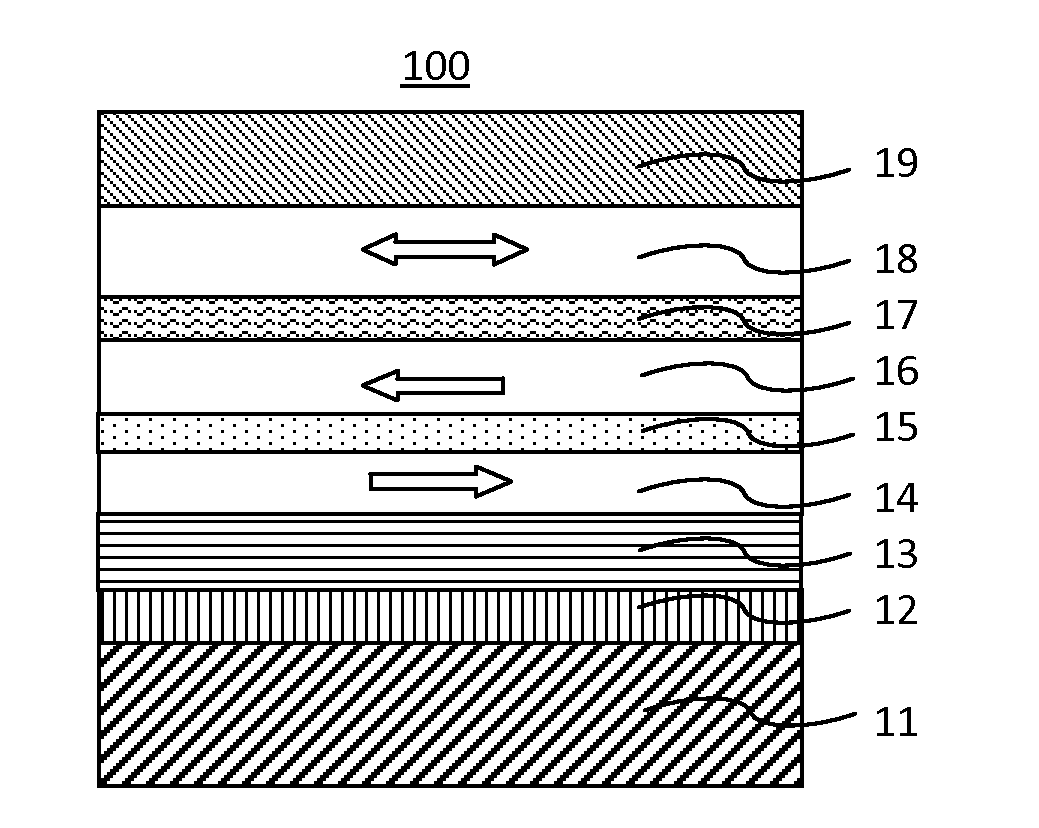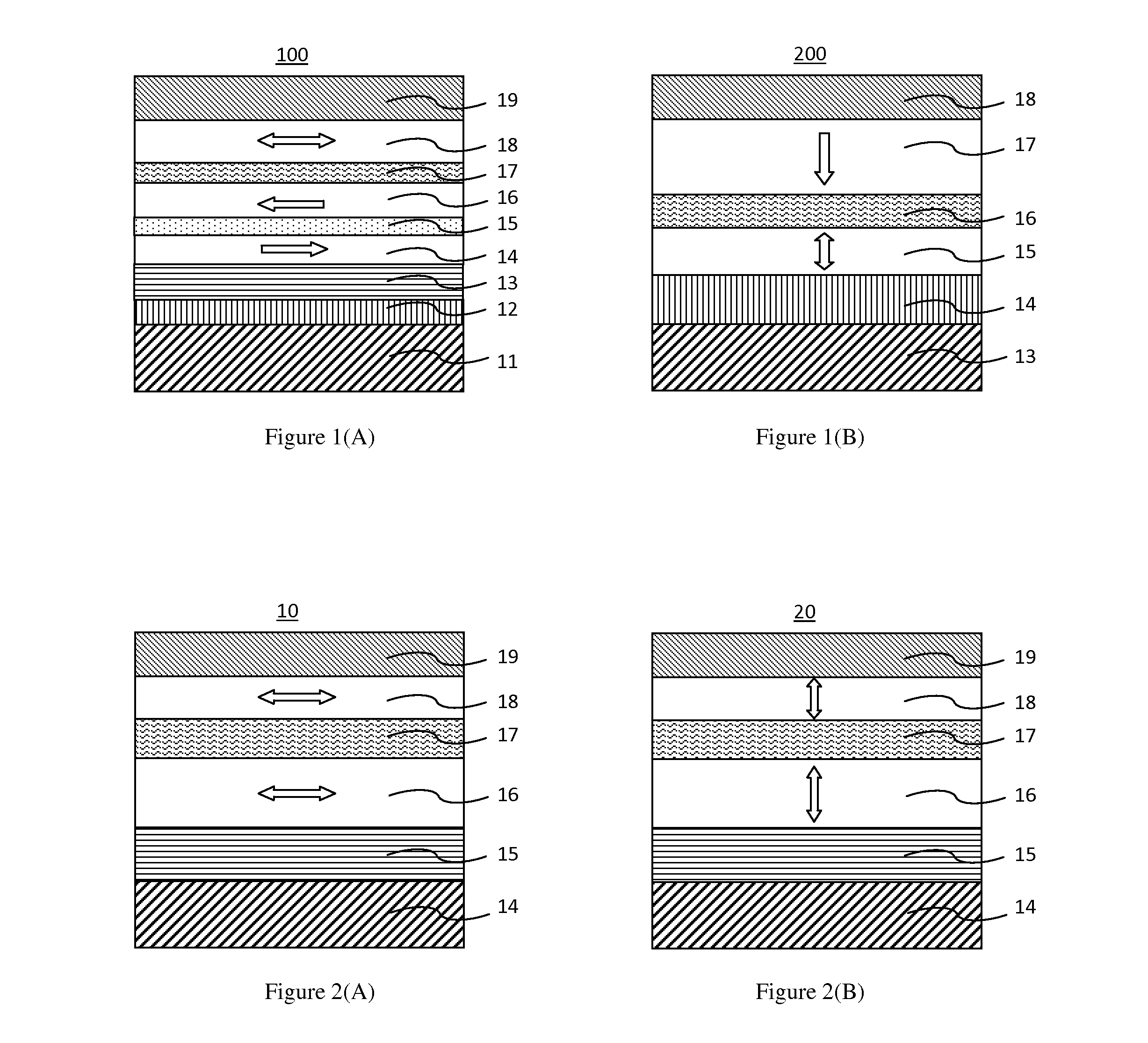MRAM having novelself-referenced read method
- Summary
- Abstract
- Description
- Claims
- Application Information
AI Technical Summary
Benefits of technology
Problems solved by technology
Method used
Image
Examples
first embodiment
[0045]FIG. 2(A) is a cross-sectional view of a memory element 10, according to the The in-plane magnetoresistive element 10 comprises: a bottom electrode 14, a spin-recording multilayer 15, a recording layer 16, a tunnel barrier layer 17, a reference layer 18 and an upper electrode 19. The recording layer typically has a magnetic easy axis defined by the combination of an oval-like shape of the recording layer in the film plane and a crystalline anisotropy, so that the recording layer has two stable magnetic states with magnetization directions along the easy axis. The energy barrier between the two stable states is high enough to ensure good data retention, and a large enough spin transfer current flowing across the recording layer and the adjacent spin-recoding layer can switch the magnetization of the recording layer form one stable state to the other stable state. The recording layer and the reference layer are made of ferromagnetic materials so that the spin transfer efficienc...
second embodiment
[0046]FIG. 2(B) illustrates a memory element, having a perpendicular magnetoresistive element. The perpendicular magnetoresistive element 20 comprises: a bottom electrode 14, a spin-recording layer 15, a recording layer 16, a tunnel barrier layer 17, a reference layer 18 and an upper electrode 19. The recording layer 16 has a perpendicular anisotropy, or its magnetic easy axis is perpendicular to the film plan and the recording layer has two stable magnetic states with magnetization directions along the easy axis. The energy barrier between the two stable states is high enough to ensure a good data retention. The recording layer and the reference layer are made of ferromagnetic materials so that the spin transfer efficiency between them is reduced while the magnetoresistive ratio is maintained at a high value. Unlike an un-switchable magnetization in prior arts, the reference layer has a small perpendicular anisotropy. Utilizing a spin transfer torque effect, the magnetization in t...
third embodiment
[0050]FIG. 7 illustrates a memory element, having a domain wall motion recording scheme. The perpendicular magnetoresistive element 30 comprises: a dielectric substrate 14, a seed layer 15, a perpendicular recording layer 16, a tunnel barrier layer 17, a reference layer 18, a nonmagnetic spacing layer 19, a fixed spin layer 20 and an upper electrode 21. Here, a spin-reference multilayer consists of the layer 19 and the layer 20. The recording layer has a vertical domain wall structure having opposite fixed magnetization directions in the two side regions which are not overlaid by the reference layer and switchable magnetization direction in the region which is overlaid by the reference layer.
[0051]FIGS. 8(A, B) show magnetoresistive element 30 illustrating the magnetization states of a recording layer in a domain wall magnetoresistive memory, respectively, according the third embodiments. In each state, the magnetization direction of the recording layer aligns along easy axis or pe...
PUM
 Login to View More
Login to View More Abstract
Description
Claims
Application Information
 Login to View More
Login to View More - Generate Ideas
- Intellectual Property
- Life Sciences
- Materials
- Tech Scout
- Unparalleled Data Quality
- Higher Quality Content
- 60% Fewer Hallucinations
Browse by: Latest US Patents, China's latest patents, Technical Efficacy Thesaurus, Application Domain, Technology Topic, Popular Technical Reports.
© 2025 PatSnap. All rights reserved.Legal|Privacy policy|Modern Slavery Act Transparency Statement|Sitemap|About US| Contact US: help@patsnap.com



